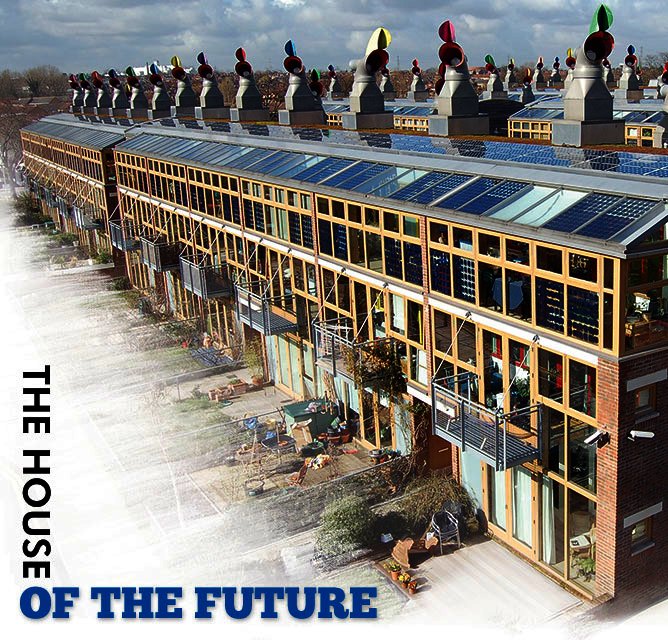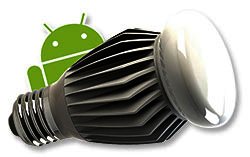The house of the future
By Mike Joubert 11 July 2011 | Categories: feature articles
Seeing that our July issue is all about Home Living, we check out four concepts that might just change the way we live in the future.
Working from home
With high petrol prices, congested streets and soon to be implemented toll fees on the N1, the house of the future looks increasingly likely to incorporate space for a home office. And why not? Thanks to a number of submarine cables, the likes of Eassy and the Western Africa Cable System, SA's broadband capacity has increased exponentially, while internet prices, especially on uncapped services, have dropped.
For companies that can allow employees to work from home, it might mean cost saving on office space and petrol allowances, but importantly it will require a paradigm shift relating to measurable work output instead of the outdated attendance model. While some employers think that productivity might suffer, this is not necessarily the case. A report from Asia found that 81% of managers believe telecommuting actually improves productivity, up from 61% in 2005. There's also the finding that at work, you're interrupted once every three minutes, which is certainly not good for concentration.
Working from home comes with its own set of challenges. For one, finding a separate space can be a problem, especially when husband and wife both telecommute. Mental barriers can also arise, with work-from-home employees complaining that they find it difficult to separate work and personal time, while cabin fever can also set in.
Android@Home changing home automation
 Apart from running the internet (at least it feels like that sometimes) and having the most used smartphone operating system in Android, Google is now also looking to make a mark in your home. At a recent developer conference they unveiled Android@Home, a home automation system based on the Android platform.
Apart from running the internet (at least it feels like that sometimes) and having the most used smartphone operating system in Android, Google is now also looking to make a mark in your home. At a recent developer conference they unveiled Android@Home, a home automation system based on the Android platform.
Home automation makes life easy by allowing you to control your house's electronic components from a centralised system. For example the activation of the alarm, the heating in certain rooms, irrigation in the garden or the lighting can be controlled from a central panel or remotely via the net. The Android@Home system would allow you to command all these directly via Android running smartphones or tablets.
The first product to work on this new platform is an LED light bulb manufactured by Lighting Science (pictured), which should be available in the US before the end of the year for about $35. It's doubtful if full scale adoption of Android@Home by manufacturers will take place soon, but with 500 000 Android smartphones being activated daily, the potential market is definitely out there.
Internet of things
Connected devices won't just stop at home if the "Internet of Things" becomes a reality. According to companies such as IBM, pretty soon, more "things" will be connected to the internet than humans. This thanks to sensors transmitting information from anywhere - dams, polar ice caps, sea levels, all relaying a constant stream of data via the net. And this is good, because it means that we'll be able to start seeing patterns of data emerging from which we will be able to make better decisions relating to the environment and pollution.
But how does this relate to the home? Homes of the future will have sensors monitoring your security, water usage and electricity consumption. More importantly, these will be able to interact with the local and national grid which should help to prevent power failures and over consumption. So for example, when you are boiling the kettle, running a warm bath, cooking dinner and trying to do the washing all at the same time, the interactive sensors will communicate with the electricity supplier to see if the grid can handle the strain. If not, it would rather opt to start the washing at a later stage.
Zero Energy Buildings
While home automation or the "Internet of Things" might be utilised for a more energy efficient home, what's becoming increasingly clear in light of energy shortages, is that we need to rethink the "house" and all the processes that go along with it. For many the ultimate goal that goes along with this is net-zero energy buildings (ZEB).
Karl van Eck, regional general manager Africa at Johnson Controls Global Energy Solutions, describes a ZEB as a residential or commercial building that consumes a net total of zero energy from non-renewable sources, including utility electricity, natural gas and oil, all of which are created using unsustainable fossil fuels. Not only can these buildings sustain themselves via onsite renewable energy production, sometimes called harvesting, but some can actually produce excess energy to be exported back into the grid.
In the UK there's a commitment that by 2016 all new homes will be zero energy buildings, with housing developments such as BedZEB in Hackbridge, London (pictured), being a frontrunner in this regard. Unfortunately South Africa is lacking behind even though solar energy is so abundant. Van Eck believes the reason for this is that renewable energy technologies themselves may not yet have the financial payback periods that building owners require. This will change however, as technology continues to evolve, while Eskom is also investigating smart metering that relays consumption information directly to the central system for better monitoring.
Photo: Tom Chance under a Creative Commons Attribution 2.0 Generic licence
Most Read Articles

Have Your Say
What new tech or developments are you most anticipating this year?


